

Note: This question is part of a series of questions that use the same or similar answer choices. An answer choice may be correct for more than one question in the series. Each question is independent of the other questions in this series. Information and details provided in a question apply to that question.
You have a database for a banking system. The database has two tables named tblDepositAcct and tblLoanAcct that store deposit and loan accounts, respectively. Both tables contain the following columns: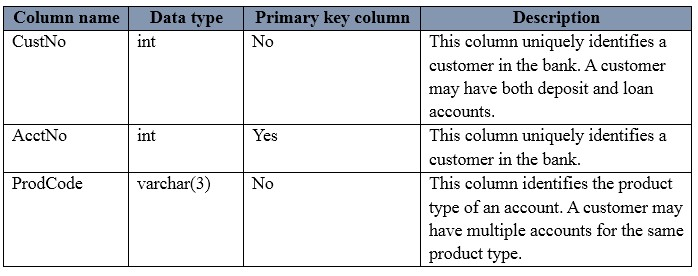
You need to determine the total number of deposit and loan accounts.
Which Transact-SQL statement should you run?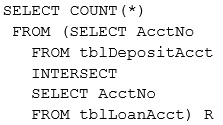
A.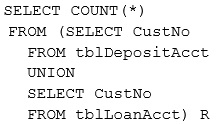
B.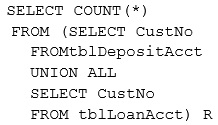
C.
D.
E.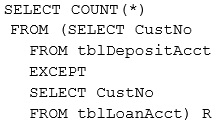
F.
G.
H.
mattia_88
Highly Voted 5 years, 8 months agoAndi64
Highly Voted 5 years, 4 months agoVermonster
Most Recent 4 years, 5 months agoAndy7622
4 years, 6 months agoHA2020
4 years, 7 months agokiri2020
4 years, 8 months agoOooo
4 years, 9 months agoBacky
5 years agoAnette
5 years, 1 month agoAnette
5 years, 1 month agoAnette
5 years, 1 month agoBarbedx
5 years, 4 months agoAnette
5 years, 1 month agoanonimdom
5 years, 5 months agoSlazericeQ
5 years, 5 months agoanonimdom
5 years, 4 months agofifkus
4 years, 5 months agoRachelT
4 years, 6 months agomlourinho
5 years, 7 months agodragan
5 years, 9 months agodragan
5 years, 9 months agoimran
5 years, 8 months ago